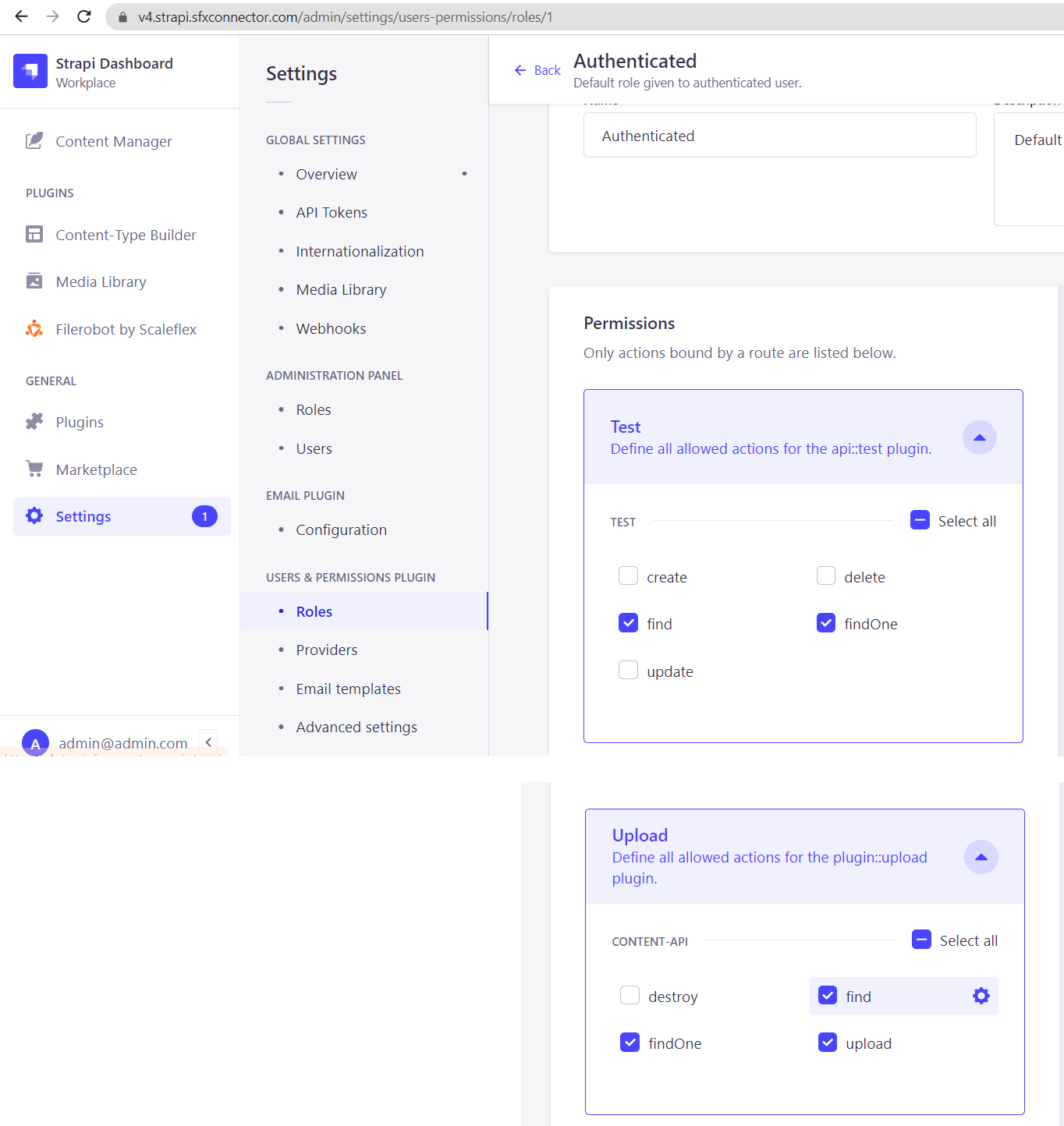@filerobot-strapi/content-plugin
v1.0.20
Published
Scaleflex DAM plugin for Strapi v4
Downloads
21
Readme
Scaleflex DAM plugin for Strapi v4
Intro
Strapi v4.x.x
To know which versions of Node goes with which versions of Strapi, refer to here: https://github.com/strapi/strapi/releases
If you are not familiar with using the Strapi CMS, here are some quick tutorials:
Strapi v4: https://docs.strapi.io/developer-docs/latest/getting-started/quick-start.html
Install Strapi CMS
You can run, for example: npx [email protected]
Plugin
https://www.npmjs.com/package/@filerobot-strapi/content-plugin
At this point, assuming that you already have a Strapi CMS installed and set up, and that you already have a super-admin user configured. It's time to install the Scaleflex DAM plugin for Strapi v4:
npm install @filerobot-strapi/content-plugin
(Use npm install @filerobot-strapi/content-plugin --legacy-peer-deps if you need to)
Run
yarn build
yarn start
Configure
Click "Scaleflex DAM" on the left vertical menu (under the plugins section)

- CNAME should be without
https:// - Folder can have a preceding
/, but it's not necessary. So both/folder_nameandfolder_nameare ok
Usage
Now you can make use of the "Synchronization Status" and "Trigger Synchronization" buttons.
Media Tab

The Media Tab keeps a "log" of all your media assets.
Indeed, there are 3 local images that are yet to be synchronized to the Scaleflex DAM.
And there are indeed 4 remote images on the Scaleflex DAM that are yet to be synchronized down to the Strapi CMS.
Trigger Synchronization

Afterwards, the logs will be updated:

FMAW Tab
When you Upload, the image will be uploaded to the Scaleflex DAM. Also, the same image (with Filerobot's URL) will go into the Strapi CMS:

If you know that city.jpg only exists on the Scaleflex DAM (ie: haven't yet been synchronized down to the Strapi CMS), then you can check it and press "Add to Strapi":

REST API
Give the appropriate permissions to the authenticated user

Get the auth token
https://www.youtube.com/watch?v=TIK9CYDgs5k&list=PL2dKqfImstaROBMu304aaEfIVTGodkdHh&index=3 (even though this tutorial is for Strapi v3, it's still applicable to Strapi v4)
curl --location --request POST '{domain}/api/auth/local'
--form 'identifier="{an authenticated user's email}"' \
--form 'password="{an authenticated user's password'}"'Retrieve Media
https://docs.strapi.io/developer-docs/latest/plugins/upload.html#endpoints
GET all media
curl --location --request GET '{domain}/api/upload/files' \
--header 'Authorization: Bearer {token}'GET one media
curl --location --request GET '{domain}/api/upload/files/3' \
--header 'Authorization: Bearer {token}'Retrieve custom content-types
https://docs.strapi.io/developer-docs/latest/developer-resources/database-apis-reference/rest-api.html
GET collection-type contents
curl --location --request GET '{domain}/api/tests' \
--header 'Authorization: Bearer {token}'GET one collection-type content
curl --location --request GET '{domain}/api/tests/1' \
--header 'Authorization: Bearer {token}'Note: If your content-type contains Media fields, then you have to append this query parameter for media info to show ?populate=%2A
https://docs.strapi.io/developer-docs/latest/developer-resources/database-apis-reference/rest/populating-fields.html#population
